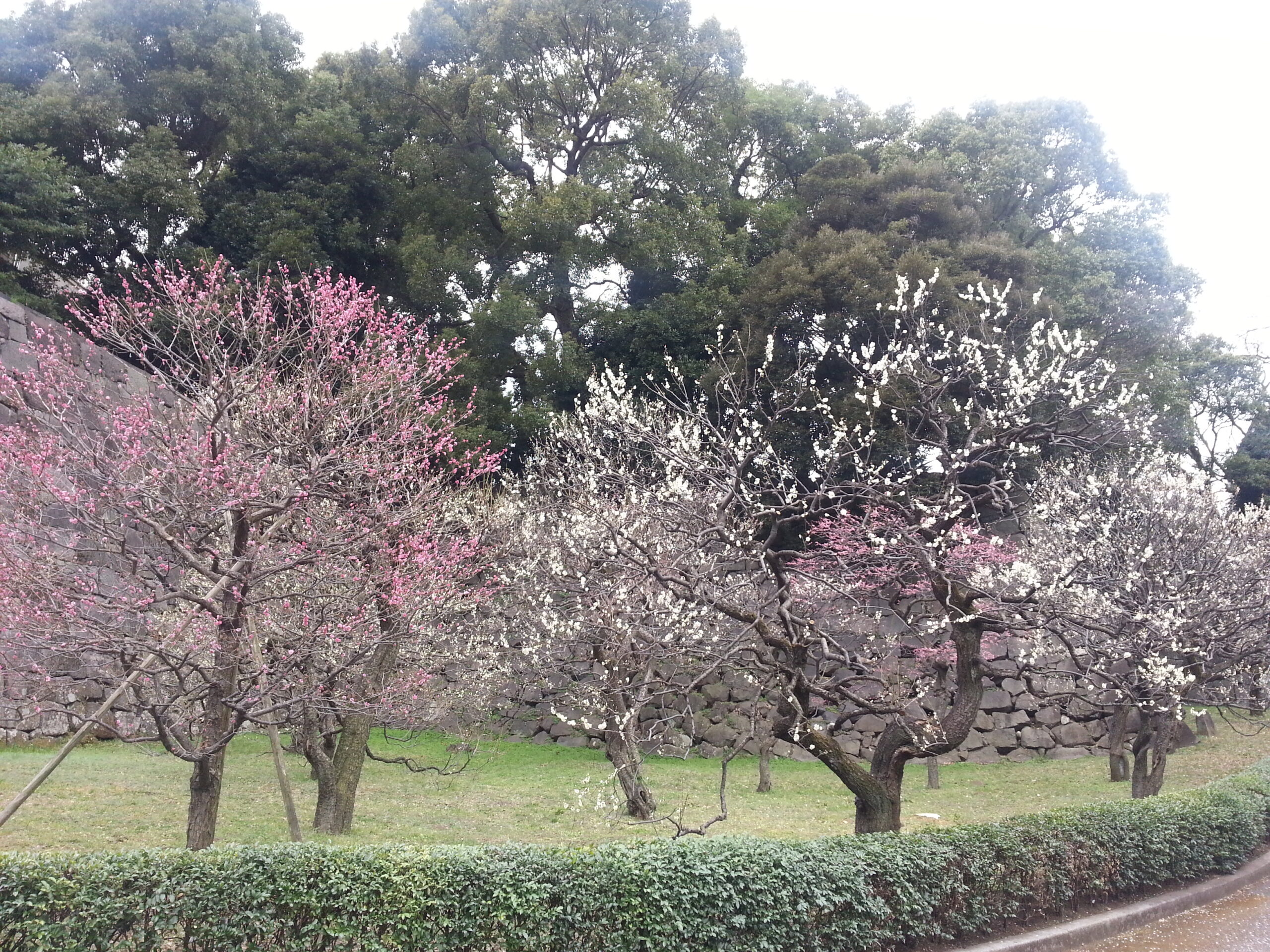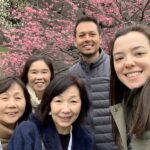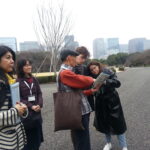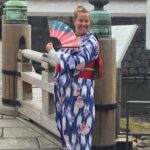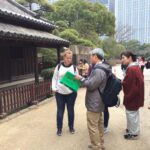Thank you for all our guests who joined the tour of East Gardens of The Imperial Palace. We welcomed 6 guests from Canada, UK, and Brazil. We divided all guests into 3 groups, and started the tour at 10am.
It was a little bit cold, but a good day for walking around. Plum blossoms are in full bloom just right now! We all enjoyed pink and white flowers and the scent of those flowers.
Recently, the current Emperor published a paper to report feeding habits of the raccoon in the Imperial Palace. The raccoon is known as “Tanuki” which scientific name is Nyctereutes procyonoides. The raccoon is a native animal to Japan and it belongs to mammal species of the canid family member similar to foxes, wolves and domestic dogs. The Emperor collected and examined feces from raccoons for 5 years in a specific place within the Imperial Palace, and reported what kinds of foods they ate in each seasons. The paper writes that raccoon in the Imperial Palace strongly depends on natural foods such as fruits and insects. Most of those food items are native to Japan since the past Edo period.
![200px-Tanuki03bs1050[1]](https://tfwt.jp/wp-content/uploads/2019/02/200px-Tanuki03bs10501.jpg)
“Tanuki” is well respected in Japanese society. It is a legendary name we all know about. If you are interested in Japanese folktales then it is the time to start reading some! You could discover Tanuki in the story of Bunbuku Chagama (Lucky Tea Kettle Story), in Kachi-Kachi Yama (The Crackling Mountain Story) and such. In fact, Tanuki is found throughout Japanese folktales as mysterious, shape shifting sprits.
In modern Japan, you will find ceramic Tanuki statues all over Japan, especially outside restaurants and bars.
![200px-ShigarakiYaki[1]](https://tfwt.jp/wp-content/uploads/2019/02/200px-ShigarakiYaki1.jpg)
It is amazing to have wild Tanuki in this highly urbanized Tokyo, isn’t it?! Not limited to Tanuki but also there are hundreds of birds, insects and plants in the Imperial Palace thanks to woodlands handled with care. After plum blossoms, cherry blossoms (SAKURA) is coming in succession, so we are waiting for you to come to Japan and join out tour!

